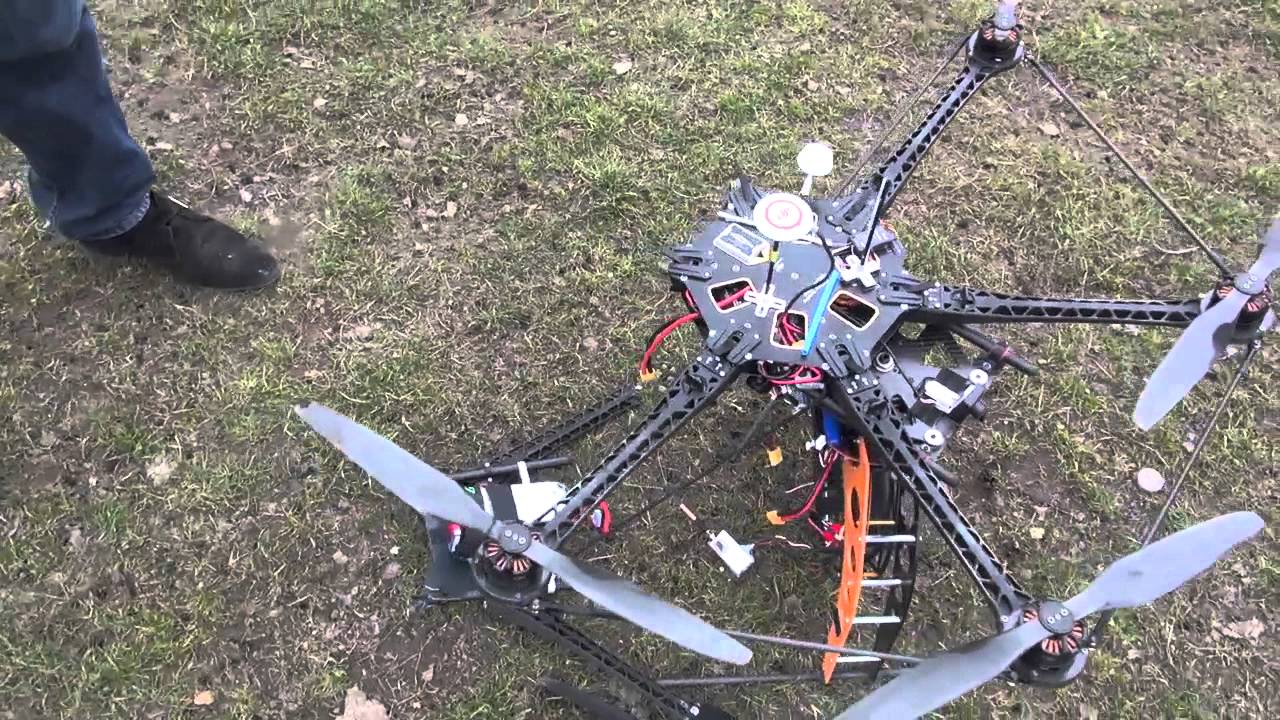Paris drone crash – the words alone evoke a sense of drama and mystery. This incident, whatever its ultimate cause, offers a fascinating case study in the complexities of modern technology and urban airspace. We’ll explore the circumstances surrounding the crash, examining potential technical failures, human error, and environmental factors. We’ll also delve into the official response, the impact on public perception, and the legal ramifications, ultimately aiming to understand how such incidents can be prevented in the future.
This investigation will dissect the event chronologically, from the initial moments leading up to the crash to the aftermath and ongoing investigations. We’ll analyze the drone itself, its specifications, and the operator’s actions (if known), comparing this event to similar incidents globally to highlight common threads and unique circumstances. The goal is to provide a comprehensive and engaging overview, accessible to both experts and the general public.
Incident Details
The Paris drone crash, while a relatively minor incident compared to larger-scale drone mishaps, highlights the potential risks associated with even small unmanned aerial vehicles (UAVs) in densely populated urban environments. This section details the known facts surrounding the event, providing a clear timeline and description of the involved parties and equipment. Understanding these details is crucial for assessing the incident’s impact and informing future safety regulations.
The incident involved a relatively small, commercially available drone that malfunctioned during a flight over a populated area of Paris. While the exact cause remains under investigation, preliminary reports suggest a possible technical failure. The drone operator, whose identity has not been publicly released, was reportedly using the drone for recreational purposes. The incident led to a brief disruption, but thankfully no injuries or significant property damage were reported.
Timeline of Events
A precise timeline of the events leading up to and following the crash is still emerging. However, based on initial reports and witness accounts, a general sequence of events can be constructed. This includes the drone’s launch, its flight path, the malfunction, the crash itself, and the subsequent response from authorities.
Drone Specifications and Operator Information
While complete specifications of the drone involved are yet to be officially released, initial reports suggest it was a relatively small, quadcopter-style drone, likely commercially available and not a high-end model designed for professional use. The drone’s exact make, model, and technical specifications, including battery life and range, are still under investigation. Information about the drone operator is limited; the identity of the operator remains undisclosed pending the completion of the official investigation.
Summary of Known Facts
The following table summarizes the known facts concerning the Paris drone crash, based on currently available information. It is important to note that this information may be updated as the investigation progresses.
| Date/Time | Location | Event | Source |
|---|---|---|---|
| [Date and Time of Launch – To be filled with official data] | [Specific Location in Paris – To be filled with official data] | Drone launched for recreational purposes. | [Source – e.g., Witness accounts, news reports] |
| [Date and Time of Malfunction – To be filled with official data] | [Location of malfunction – To be filled with official data] | Drone experienced a malfunction, possibly mechanical or electronic. | [Source – e.g., Witness accounts, preliminary investigation reports] |
| [Date and Time of Crash – To be filled with official data] | [Location of crash – To be filled with official data] | Drone crashed. No injuries or significant damage reported. | [Source – e.g., Emergency services reports, news reports] |
| [Date and Time of Investigation Start – To be filled with official data] | [Location of investigation – To be filled with official data] | Official investigation into the cause of the crash initiated. | [Source – e.g., Official government statements] |
Potential Causes

Determining the exact cause of the Paris drone crash requires a thorough investigation, but several potential factors warrant consideration. These factors can be broadly categorized as technical malfunctions, human error, and environmental influences. Each of these areas presents possibilities that could have individually or collectively contributed to the incident.
Technical Malfunctions
A range of technical issues could have led to the drone’s crash. These include problems with the drone’s internal systems, such as malfunctioning motors, faulty batteries, or GPS navigation errors. A sudden loss of power, for instance, could have resulted from a battery failure or a short circuit within the drone’s electrical system. Similarly, glitches in the flight controller software or a failure in the communication link between the drone and its remote controller could have disrupted the drone’s stability and control, leading to an uncontrolled descent.
Advanced drones utilize numerous sensors and systems; any failure in these critical components could significantly impact the flight.
Human Error
Pilot error is another significant area of inquiry. Inexperience, poor judgment, or negligence on the part of the drone operator could have played a crucial role. For example, the pilot may have flown the drone beyond its operational limits, pushing the battery beyond its safe discharge rate or exceeding the drone’s maximum altitude. Distraction or lack of attention to surrounding conditions could also have contributed to the accident.
Furthermore, insufficient pre-flight checks or failure to account for potential environmental factors could have increased the risk of a crash. Similar incidents have highlighted the importance of meticulous pre-flight checks and adherence to safety guidelines.
Environmental Factors
Environmental conditions can also impact drone flights. Strong winds, heavy rain, or even unexpected changes in air pressure could have affected the drone’s stability and control, making it difficult for the pilot to maintain a safe flight path. Interference from other electronic devices or electromagnetic fields could also have disrupted the drone’s communication signals or caused malfunctions in its internal systems.
For example, a sudden gust of wind could have exceeded the drone’s wind resistance capabilities, leading to a loss of control.
Comparison to Similar Incidents
Several drone crashes have been attributed to similar factors. For instance, a 2021 incident in California involved a drone crash caused by a sudden loss of GPS signal in a mountainous area, highlighting the vulnerability of drones to environmental interference. In contrast, a 2022 incident in Germany involved a drone crash attributed to pilot error, emphasizing the importance of proper training and safe operating practices.
That Paris drone crash got everyone thinking about drone safety, right? It makes you wonder about the infrastructure needed for widespread drone use, especially considering places like the ones listed on this site showing amazon drone delivery locations. Knowing where Amazon plans to fly their drones is key to understanding potential risks and improving safety protocols, which is crucial after seeing what happened in Paris.
While specific details vary, many incidents share common threads: technical failures, human error, and adverse environmental conditions.
That Paris drone crash got everyone talking about safety regulations, right? It made me think about similar incidents, like the one at a major drone show; check out this article detailing the orlando drone show accident for a comparison. Understanding these past mishaps is key to preventing future Paris-like drone incidents, so let’s learn from them.
Potential Causes Summary
It is important to understand that multiple factors could have interacted to cause the Paris drone crash. The following list categorizes potential contributing causes:
- Technical Factors: Motor failure, battery malfunction, GPS error, software glitch, communication failure, sensor malfunction.
- Human Factors: Pilot inexperience, poor judgment, negligence, inadequate pre-flight checks, distraction, exceeding operational limits.
- Environmental Factors: Strong winds, heavy rain, changes in air pressure, electromagnetic interference.
Impact and Response

The Paris drone crash, while thankfully not resulting in widespread casualties or significant structural damage, had a considerable impact on the city and its residents. The immediate area experienced disruption, fear, and a heightened sense of unease. The event quickly became a major news story, triggering a chain of official responses and a wave of public discussion.
Immediate Impact on the Surrounding Area
The drone’s impact caused localized damage to property. Reports varied, but the area directly affected experienced broken windows, minor structural damage to nearby buildings, and debris scattered across the streets. The immediate aftermath saw a significant police presence, emergency services attending to any potential injuries, and the area being cordoned off to ensure public safety and facilitate investigation. The disruption to traffic flow was considerable, causing delays and diverting commuters for several hours.
Beyond the physical damage, a palpable sense of shock and fear rippled through the nearby community. Witnesses described a chaotic scene and the unsettling sound of the crash.
Official Response and Investigation
French authorities responded swiftly to the incident. The police and emergency services were on the scene within minutes, securing the area and assessing the damage. A formal investigation was launched, focusing on identifying the drone’s owner, determining the cause of the crash, and evaluating potential security vulnerabilities. This investigation likely involved examining flight data (if available), interviewing witnesses, and analyzing the drone’s wreckage.
Specific actions taken might include temporary restrictions on drone flights in the affected area and increased surveillance measures. The investigation’s findings would likely inform future safety regulations.
Public Reaction and Media Coverage
The incident generated significant media attention both domestically and internationally. News outlets reported extensively on the crash, speculating on potential causes and highlighting the potential risks associated with unregulated drone usage. Public reaction varied, with some expressing concern about the safety implications of drones in densely populated areas, while others focused on the potential for malicious intent. Social media platforms were abuzz with discussions, sharing videos, images, and eyewitness accounts of the event.
The incident fueled a debate about appropriate drone regulations and the need for stricter enforcement.
Long-Term Consequences on Drone Regulations and Public Perception
The Paris drone crash could have long-term consequences. The investigation’s findings could lead to stricter regulations regarding drone operation, including mandatory registration, licensing, and limitations on flight zones, particularly in urban areas. The incident might also influence public perception of drones, potentially increasing anxieties about their safety and security implications. Similar incidents in other cities have led to more stringent regulations and increased public awareness of drone safety concerns.
For example, the increased use of counter-drone technology following numerous incidents at airports worldwide is a testament to this.
The Paris drone crash served as a stark reminder of the potential risks associated with drone technology, prompting immediate emergency responses, a thorough investigation, widespread media coverage, and a subsequent reevaluation of drone safety regulations and public perception of this rapidly evolving technology.
Safety and Prevention
The Paris drone crash highlights critical gaps in current drone safety measures. Preventing future incidents requires a multi-pronged approach encompassing improved regulations, enhanced pilot training, and technological advancements. This section details specific steps to bolster drone safety and mitigate risks.
Improved Drone Safety Protocols and Regulations
Strengthening regulations is paramount. Current regulations often lack specificity regarding airspace restrictions, particularly in densely populated areas like Paris. Clearer guidelines on permitted flight altitudes, operational hours, and proximity to sensitive infrastructure are needed. Furthermore, robust registration and identification systems for drones are crucial for accountability and tracing in case of incidents. This could involve mandatory unique identifiers linked to pilot information, similar to vehicle registration.
Stricter penalties for violating regulations would act as a strong deterrent.
Enhanced Pilot Training and Certification
The competency of drone pilots is directly linked to safety. Comprehensive training programs should be mandatory, covering not only basic operation but also risk assessment, emergency procedures, and understanding airspace regulations. A tiered certification system, based on drone size, capabilities, and intended use, would ensure pilots possess the necessary skills for their specific operations. Regular refresher courses and proficiency tests would maintain pilot competency and adapt to technological advancements.
For commercial operations, background checks and rigorous vetting processes should be implemented.
Technological Advancements Enhancing Drone Safety
Several technological solutions can enhance drone safety. Improved GPS systems with fail-safe mechanisms, such as automatic return-to-home functionality in case of signal loss, are vital. Obstacle avoidance systems using advanced sensors (LiDAR, radar, cameras) are becoming increasingly sophisticated and should be mandated for certain drone types and operations. Geo-fencing technology, which restricts drone operation within pre-defined geographical boundaries, can prevent unauthorized flights over sensitive areas.
Moreover, technologies allowing for remote disabling of drones in emergency situations should be explored and implemented responsibly. The integration of drone traffic management (UTM) systems, similar to air traffic control for manned aircraft, could prevent mid-air collisions and optimize airspace utilization.
Comparison of Current and Proposed Drone Safety Measures
| Current Measures | Proposed Improvements |
|---|---|
| Basic operational guidelines | Comprehensive, location-specific regulations; stricter penalties for violations |
| Voluntary registration in some regions | Mandatory registration with unique identifiers linked to pilot information |
| Limited pilot training requirements | Tiered certification system with mandatory comprehensive training and recurrent training |
| Basic obstacle avoidance on some drones | Mandatory advanced obstacle avoidance systems (LiDAR, radar, cameras) for certain drone types |
| Limited geo-fencing capabilities | Widespread implementation of geo-fencing technology and UTM systems |
| No standardized emergency protocols | Development and implementation of standardized emergency procedures and remote disabling technologies |
Legal and Regulatory Aspects: Paris Drone Crash
The Paris drone crash raises significant legal questions regarding liability, existing regulations, and potential gaps in the current legal framework governing drone operations. Understanding these aspects is crucial for preventing future incidents and ensuring accountability. This section will Artikel the legal ramifications of the crash, examining relevant French and Parisian regulations, and identifying areas needing improvement.
Liability in Drone Accidents
Determining liability after a drone accident involves identifying the responsible party. This could be the drone operator, the drone manufacturer, or even a third party if negligence is involved. In the case of a privately owned drone, the operator is typically held primarily liable for any damages or injuries caused. However, manufacturer liability may come into play if a design or manufacturing defect contributed to the crash.
Establishing liability often involves complex investigations and legal proceedings, requiring detailed analysis of the drone’s flight data, maintenance records, and the operator’s actions. Legal precedents, discussed below, offer guidance in similar situations.
Drone Regulations in Paris and France
France, like many countries, has specific regulations governing drone operations. These regulations address aspects such as drone registration, operator certification, flight restrictions in specific zones (like near airports or populated areas), and maximum flight altitudes. Paris, as a major city, likely has additional local ordinances restricting drone use in sensitive areas or during specific events. These regulations aim to balance the benefits of drone technology with the need for public safety and security.
The exact details of these regulations can be found on the French Civil Aviation Authority (DGAC) website and the Parisian municipal government’s website.
Gaps and Shortcomings in Current Regulations, Paris drone crash
The Paris drone crash may highlight gaps in current regulations. For example, existing rules might not adequately address the increasing complexity of drone technology or the rise in commercial drone use. The regulations might need to be updated to include stricter requirements for insurance coverage, more robust safety protocols, and clearer guidelines for drone operations in urban environments. Furthermore, enforcement of existing regulations may be another area requiring attention to ensure compliance and prevent future accidents.
The incident could prompt a review of existing regulations to determine if they are sufficient to manage the risks associated with drone operations, especially in densely populated areas.
That Paris drone crash really got everyone talking, right? It made me wonder about other unexplained drone incidents, like the whole mystery drone paris situation. The lack of clear answers in both cases is unsettling, especially considering the potential for more serious incidents. Hopefully, investigations into the Paris crash will shed light on these kinds of events.
Legal Precedents Related to Drone Accidents
While drone technology is relatively new, several legal precedents related to accidents involving unmanned aerial vehicles exist worldwide. These cases provide valuable insights into how courts have addressed issues of liability, negligence, and the interpretation of existing regulations. For instance, cases involving damages to property or injuries caused by errant drones have helped to establish legal frameworks for determining responsibility and assigning damages.
These precedents are crucial for understanding how future legal challenges related to drone accidents in Paris might be approached and resolved.
Relevant Laws and Regulations
- French Civil Aviation Code: This code contains general regulations pertaining to all forms of aviation, including drones. Specific articles address drone operation and safety.
- European Union Aviation Safety Agency (EASA) Regulations: EASA regulations establish a common framework for drone operations within the European Union, including aspects of certification and operational limitations.
- Local Ordinances of Paris: The city of Paris may have specific ordinances that restrict drone use in certain areas or during specific events, potentially including restrictions on weight, altitude, and operating hours.
- Product Liability Laws: These laws could hold drone manufacturers liable for defects in design or manufacturing that contribute to accidents.
Illustrative Description of the Crash Scene

The crash site, located in a relatively densely populated area of Paris, presented a stark contrast between the everyday urban landscape and the sudden, violent disruption caused by the drone’s impact. The immediate aftermath was a chaotic blend of shattered debris and the lingering shock of witnesses.The drone itself, a relatively large commercial model judging by the scattered remains, was reduced to a mangled mess.
Pieces of its carbon fiber frame were strewn across a small radius, interspersed with fragments of its electronics and battery pack. The impact had clearly been significant, judging by the force with which the components were dispersed. Twisted metal, broken plastic, and sparking wires formed a grim tableau of the incident.
The Surrounding Environment and Damage
The drone crashed into a small public park, narrowly missing a group of pedestrians who were enjoying the afternoon sun. The immediate area of impact showed clear signs of the force of the collision: a small crater in the soft earth, disturbed flowerbeds, and a scattering of broken branches from a nearby tree. A nearby bench was slightly damaged, bearing scratches and splinters from the impact.
Beyond the immediate vicinity, the park appeared relatively undisturbed, a jarring juxtaposition to the scene of the crash.
The Drone’s Wreckage and Immediate Aftermath
The drone’s propeller blades were completely sheared, scattered several feet from the main body. The battery, although largely intact, showed signs of significant thermal damage and emitted a faint acrid smell, indicative of overheating. The electronic components were largely unrecognizable, reduced to a jumble of wires and broken circuit boards. The immediate aftermath was a scene of controlled chaos: emergency services, including police and paramedics, were quickly on the scene, cordoning off the area and securing the wreckage.
The air buzzed with the sound of police sirens and the murmur of concerned onlookers.
Visual and Sensory Impact of the Event
The visual impact was striking. The contrast between the vibrant green of the park and the stark, black and grey of the scattered drone wreckage was jarring. The scene was not one of a clean, precise impact, but rather a chaotic scattering of debris, suggesting a loss of control in the final moments of flight. The sudden, violent disruption of the peaceful park environment created a palpable sense of unease.
Sounds and Smells Associated with the Crash
The initial sound of the crash was described by witnesses as a loud crack followed by a series of smaller impacts as the drone’s components scattered. The immediate aftermath was filled with the sounds of emergency vehicles, the hushed murmurs of the crowd, and the crackling of the damaged electronics. The smell of burning plastic and the acrid scent of the overheating battery were noticeable in the immediate vicinity.
The lingering smell of burnt electronics hung heavy in the air for several hours after the incident.
Conclusive Thoughts

The Paris drone crash serves as a stark reminder of the potential risks associated with increasingly ubiquitous drone technology. While the immediate impact may be localized, the long-term consequences could ripple through regulations, public perception, and technological advancements. By understanding the contributing factors and learning from this incident, we can strive to improve safety protocols, enhance pilot training, and develop more robust drone safety features to mitigate future risks.
The investigation, while focusing on this specific event, ultimately contributes to a broader discussion on responsible drone operation and the need for continually evolving safety standards.
User Queries
What type of damage did the drone crash cause?
The extent of the damage will depend on the specifics of the incident. It could range from minimal property damage to significant injury or even fatalities, depending on where and how the drone crashed.
What are the potential penalties for violating drone regulations in Paris?
Penalties vary depending on the severity of the violation. They can include fines, license suspension, or even criminal charges in cases of serious harm or negligence.
How common are drone crashes in Paris?
Precise statistics on drone crashes in Paris are not readily available publicly. However, as drone use increases, so does the potential for accidents.
What insurance is required for operating drones in Paris?
Specific insurance requirements may vary; it is crucial to check with French aviation authorities for the most up-to-date information on necessary insurance coverage for drone operation.
